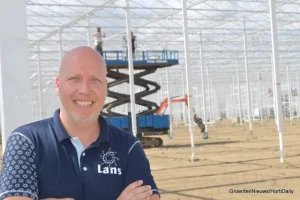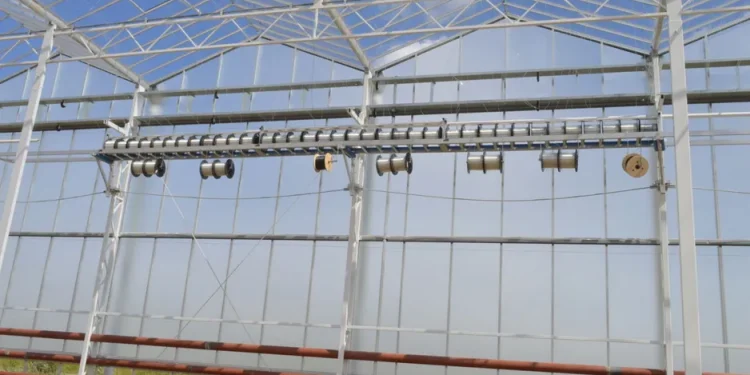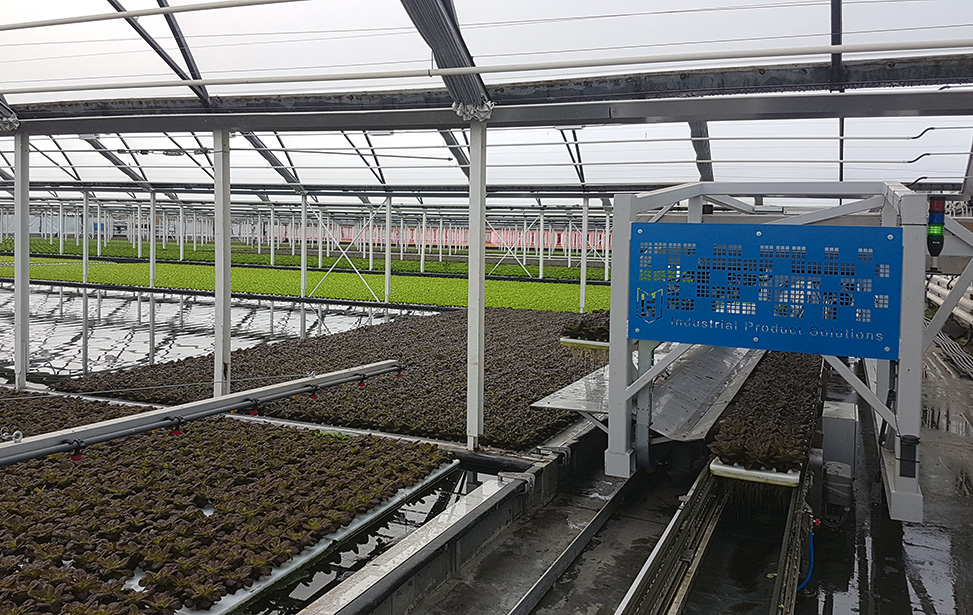Lans, a prominent player in the tomato cultivation sector, is continuing its expansion efforts to meet the increasing global demand for tomatoes. The company is currently developing an additional eight hectares of land in Dinteloord, Netherlands, as part of the second phase of its ambitious growth strategy. This expansion is designed not only to scale up production but also to integrate cutting-edge technology and sustainable practices in response to industry pressures.
Chief Operating Officer Erwin van der Lans emphasizes the importance of scaling operations to remain competitive and fulfill customer requests across various tomato segments. “Scaling up is crucial not only to meet demand but also to manage cost increases effectively,” he explains. Lans is also exploring opportunities beyond the Netherlands, with its successful venture in Egypt likely to be the first of many international expansions.
Innovations in Automation and Sustainability
In light of rising labor and energy costs, Lans is investing in labor-saving technologies. The introduction of automated guided vehicles (AGVs) from Bogaerts Greenhouse Logistics in their new Dinteloord facility exemplifies this approach. These AGVs will streamline the harvesting process, reducing the need for manual labor and increasing operational efficiency.
Sustainability remains a core focus for Lans. The company has invested in full-LED lighting systems from Food Autonomy for the new greenhouse. While energy prices continue to fluctuate, Lans is committed to sustainable production practices, even if it means adjusting cultivation techniques to adapt to changing economic conditions.
The new Dinteloord facility was also designed with future energy solutions in mind. Lans had anticipated utilizing residual heat and CO₂ from the nearby PreZero waste-to-energy plant in Roosendaal, though this partnership has yet to materialize. Despite this setback, Erwin sees potential in similar initiatives, as well as in geothermal energy, to keep energy costs sustainable.
Strategic Expansion and Future-Proofing
The new greenhouse, a conventional structure equipped with basic techniques, LED lighting, and dual screens from Ludvig Svensson, represents Lans’ commitment to intensive cultivation practices. These practices aim to maximize yield per hectare while minimizing the environmental footprint, or “hortifootprint,” as Lans puts it.
However, the expansion is not without its challenges. Moisture management and energy supply remain areas of concern, particularly with future phases still in the planning stages. Erwin notes the need for integrated solutions that can combine heat, CO₂, moisture removal, and electricity management to optimize greenhouse conditions.
Looking ahead, Lans is determined to continue growing its operations, both in the Netherlands and internationally, to secure its position as a leader in the tomato industry. “We want to be among the top producers, not just in the Netherlands but globally,” says Erwin. “If that means expanding abroad, we’re ready to do so.”
Construction Progress and Challenges
The construction of the new greenhouse in Dinteloord is progressing rapidly, though not without its obstacles. Heavy rainfall earlier in the year delayed the start of steel construction, and logistical issues, such as a detour taken by a ship carrying essential glass materials, have added to the challenges. Despite these setbacks, the construction team is working diligently to stay on schedule, with plants expected to be installed in week 44.
Once completed, phases 1 and 2 of the Dinteloord facility will focus on producing tomatoes for the large cluster segment, specifically the Macxize variety. As Lans moves forward with its expansion plans, the company remains committed to delivering high-quality tomatoes while navigating the complexities of modern agricultural production.











